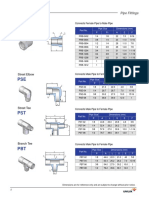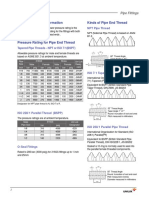0 ratings0% found this document useful (0 votes)
HST 1
HST 1
Uploaded by
sopan kharcheBasic understanding of hydrostatic transmission
Copyright:
© All Rights Reserved
Available Formats
Download as PDF or read online from Scribd
Download as pdf
HST 1
HST 1
Uploaded by
sopan kharche0 ratings0% found this document useful (0 votes)
Basic understanding of hydrostatic transmission
Original Title
HST-1
Copyright
© © All Rights Reserved
Available Formats
PDF or read online from Scribd
Share this document
Did you find this document useful?
Is this content inappropriate?
Basic understanding of hydrostatic transmission
Copyright:
© All Rights Reserved
Available Formats
Download as PDF or read online from Scribd
Download as pdf
0 ratings0% found this document useful (0 votes)
HST 1
HST 1
Uploaded by
sopan kharcheBasic understanding of hydrostatic transmission
Copyright:
© All Rights Reserved
Available Formats
Download as PDF or read online from Scribd
Download as pdf
You are on page 1/ 1
devce
,
Figure 1.1 Typical sitation requiring a power transmission
an electric motor or an engine) whose output power is P,, We connect the input shaft 10
‘an output (driven) shaft that must rotate at an angular speed a. The angular speed of the
driven shaft may be greater or lesser than the angular speed of the input shaft or even have
‘an opposite direction in relation to the input shaft's angular speed.
‘When mechanical transmissions, such as gearboxes, belts and chains, are considered, the
spatial arrangement of the driving and driven shafls is of paramount importance because
it dictates the technology to be used. For example, in the case of parallel shafts, 2 gear
transmission may be used if their distance from each other is not too great. However, the
farther the shafts are from each other, the heavier the gearbox becomes, leading to more
demanding requirements with respect to alignment and lubrication. Belts and pulleys may
‘be used for transmissions between shafts that are separated by a considerable length, but the
problem of spatial arrangement remains. Moreover, the power to be transmitted becomes
‘considerably limited due to the belt-to-pulley friction coefficient, Chain transmissions are
noisy and require the shafts to be perfectly parallel with constant lubrication. Addition-
ally, these types of transmissions ~ with the exception of some special arrangements of
cchains and belts ~ do not allow for continuous transmission ratios, as will be explained
shortly,
Mechanical transmissions, in general, have the following limitations:
1. ‘They require the driving and driven shafts to be relatively near one another.
2. They ate usually not flexible with regard to the spatial arrangement of the components
3. ‘Typically, they do not provide a continuous transmission ratio, that i, the ratio between
the angular speed of the driven shaft and the angular speed of the driving shaft assumes
discrete values.
Hydrostatic transmissions transmit power through a hydraulic fluid that travels inside flex-
ible hoses or other types of conduits. AS a result, there is great spatial flexibility, and the
input and output shafts can be placed almost anywhere in relation to one another. Contin-
uous transmission ratios are an inherent property of hydrostatic transmissions, whereas in
You might also like
- The Subtle Art of Not Giving a F*ck: A Counterintuitive Approach to Living a Good LifeFrom EverandThe Subtle Art of Not Giving a F*ck: A Counterintuitive Approach to Living a Good Life4/5 (6054)
- The Gifts of Imperfection: Let Go of Who You Think You're Supposed to Be and Embrace Who You AreFrom EverandThe Gifts of Imperfection: Let Go of Who You Think You're Supposed to Be and Embrace Who You Are4/5 (1142)
- Never Split the Difference: Negotiating As If Your Life Depended On ItFrom EverandNever Split the Difference: Negotiating As If Your Life Depended On It4.5/5 (917)
- Hidden Figures: The American Dream and the Untold Story of the Black Women Mathematicians Who Helped Win the Space RaceFrom EverandHidden Figures: The American Dream and the Untold Story of the Black Women Mathematicians Who Helped Win the Space Race4/5 (946)
- The Hard Thing About Hard Things: Building a Business When There Are No Easy AnswersFrom EverandThe Hard Thing About Hard Things: Building a Business When There Are No Easy Answers4.5/5 (361)
- Devil in the Grove: Thurgood Marshall, the Groveland Boys, and the Dawn of a New AmericaFrom EverandDevil in the Grove: Thurgood Marshall, the Groveland Boys, and the Dawn of a New America4.5/5 (273)
- The World Is Flat 3.0: A Brief History of the Twenty-first CenturyFrom EverandThe World Is Flat 3.0: A Brief History of the Twenty-first Century3.5/5 (2283)
- A Heartbreaking Work Of Staggering Genius: A Memoir Based on a True StoryFrom EverandA Heartbreaking Work Of Staggering Genius: A Memoir Based on a True Story3.5/5 (233)
- Siemens Mechatronic Systems Certification Program - Assistant (Level 1) For College /university (OL-SMSCP)No ratings yetSiemens Mechatronic Systems Certification Program - Assistant (Level 1) For College /university (OL-SMSCP)1 page
- Machine Shop Layout: VMC M/C 1 VMC M/C 2 VMC M/C 3 VMC M/C 4No ratings yetMachine Shop Layout: VMC M/C 1 VMC M/C 2 VMC M/C 3 VMC M/C 41 page




















































